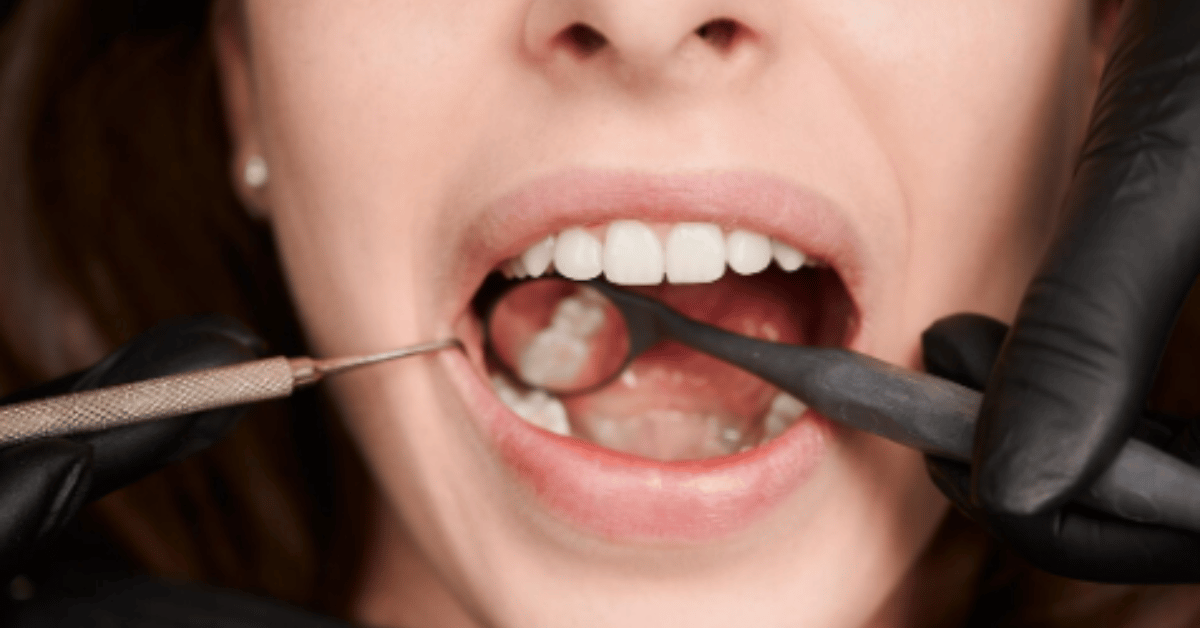Back molars, also known as posterior teeth, are essential in maintaining oral function, overall health, and daily comfort. These teeth, located at the rear of the mouth, are primarily responsible for grinding food into digestible pieces, making them one of the most critical components of the chewing process. Understanding back molars means looking beyond their placement; it requires appreciating their role in supporting jaw stability, facial structure, and long-term oral wellness. For many individuals, issues with back molars—ranging from cavities to wisdom tooth impactions—represent some of the most common dental challenges. This article explores back molars in depth: their anatomy, purpose, common problems, preventive strategies, and modern treatments that keep them functional throughout life.
The importance of back molars cannot be overstated. They absorb the bulk of chewing pressure, balance bite alignment, and provide strength to both jaws. Without them, even simple tasks like eating bread, chewing vegetables, or speaking clearly can become difficult. Many patients overlook these teeth because they are less visible than the front incisors or canines, yet their health directly influences digestion and quality of life. Dentists often remark that preserving back molars is the key to “saving the bite,” since once they deteriorate, restoring function becomes complicated. This article offers a comprehensive view of back molars—from development in childhood through adulthood—and sheds light on how their care reflects overall oral health. As the saying goes, “Healthy back teeth make for a healthy body.”
Anatomy of Back Molars
Back molars are divided into premolars and true molars. Premolars, also called bicuspids, sit between canines and molars, acting as transition teeth. True molars, positioned further back, are broader with multiple cusps. Each molar typically has two to four roots, depending on whether it is located in the upper or lower jaw. This root system gives molars their stability, allowing them to withstand immense chewing forces. Their enamel, the outermost protective layer, is the thickest among all teeth, reflecting their heavy-duty role.
Within each molar lies dentin and pulp, containing nerves and blood vessels. Damage here often results in severe toothache, one of the most recognizable symptoms of molar decay. The occlusal surface—the biting surface—is designed with grooves and ridges to crush and grind food effectively. For children, primary molars appear around 12 to 18 months and are eventually replaced by permanent molars around ages 6 to 12. Wisdom teeth, or third molars, typically erupt between 17 and 25 years. These late arrivals often pose alignment or impaction challenges.
Functions of Back Molars
The central function of back molars is grinding. Unlike incisors, which cut food, molars pulverize it, preparing it for safe swallowing and efficient digestion. They also help maintain vertical dimension of the face, preventing premature collapse of jaw alignment. Molar”s provide distribution of chewing pressure across both sides of the mouth, minimizing wear on front teeth. They also contribute to speech clarity, especially in forming certain sounds that require contact between the tongue and posterior teeth.
Equally important, molar’s protect temporomandibular joints (TMJ). By evenly distributing force, they prevent jaw strain. Missing molars can cause surrounding teeth to drift, leading to malocclusion, crowding, or even bone resorption in the jaw. Their role extends beyond mechanics: dentists note that healthy molar’s influence systemic health, as proper chewing aids nutrient absorption. Neglecting molar function often leads to digestive problems, highlighting their integral connection to overall wellness.
Common Problems Affecting Back Molars
Back molars, due to their location and complex surfaces, are more prone to dental issues than front teeth. Cavities are frequent because grooves on their biting surfaces trap food and bacteria. Gum disease also affects molars heavily, as plaque buildup is harder to clean in rear areas. Tooth fractures, especially from clenching or grinding (bruxism), often occur in molars due to the enormous force they endure.
Wisdom teeth present another unique challenge. When impacted, they push against other molars, causing pain, swelling, or misalignment. Periodontal infections around partially erupted wisdom teeth are common among young adults. Root canal infections also frequently involve molar’s since decay can penetrate deep into their multiple roots. Extraction is sometimes required when molars are severely damaged. Unfortunately, losing molars significantly affects chewing efficiency. Dental experts emphasize replacing extracted molars with implants or bridges to restore balance.
Preventive Care for Back Molars
Maintaining back molar’s requires consistent oral hygiene. Because molars are less accessible, they demand more thorough brushing and flossing techniques. Dentists often recommend angled toothbrush heads and water flossers to reach deep areas. Fluoride strengthens molar enamel, making it resistant to cavities. Dental sealants, especially for children, create a protective coating over grooves, preventing decay.
Routine dental visits allow early detection of small cavities or gum inflammation before they progress. Nutrition also plays a vital role. Reducing sugar intake prevents plaque buildup, while eating fibrous foods naturally cleans molar surfaces. Using night guards can protect molars from grinding damage. Ultimately, prevention focuses on preserving molars for life, as replacements, though effective, never fully replicate natural strength. As Dr. Elizabeth Morton once said, “The best molar is the one you never lose.”
Table 1: Types of Back Molars and Their Functions
| Type of Tooth | Location | Main Function | Age of Eruption |
|---|---|---|---|
| First Premolars | Behind canines | Crush and tear food | 10–11 years |
| Second Premolars | Behind first premolars | Assist in grinding | 11–12 years |
| First Molars | Behind premolars | Primary grinding force | 6 years |
| Second Molars | Behind first molars | Additional grinding power | 12 years |
| Third Molars | Very back (wisdom) | Assist but often problematic | 17–25 years |
Treatments for Back Molar Issues
When back molar’s face problems, treatment depends on severity. Small cavities are treated with fillings, while extensive decay may require root canal therapy. For fractures, dental crowns restore structure and strength. Gum disease around molars is managed with scaling, root planing, and in severe cases, surgery. Wisdom tooth complications often lead to extraction, especially when recurrent infections occur.
Dental implants have revolutionized molar replacement, providing a durable alternative that mimics natural tooth roots. Bridges are another option but require adjacent teeth support. Preventive orthodontics sometimes create room for erupting molar’s, reducing impaction risks. Modern imaging, such as 3D scans, enables dentists to map molar roots precisely before surgery. These innovations have improved success rates, ensuring patients retain chewing efficiency even when interventions are necessary.
Table 2: Common Molar Problems and Solutions
| Problem | Symptoms | Treatment Approach |
|---|---|---|
| Cavities | Toothache, sensitivity | Fillings, crowns |
| Gum disease | Swelling, bleeding | Cleaning, scaling, surgery |
| Fractures | Pain while chewing | Dental crowns |
| Root infections | Severe throbbing pain | Root canal therapy |
| Wisdom impaction | Swelling, jaw stiffness | Surgical extraction |
The Role of Back Molars in Facial Structure
Back molar’s provide critical vertical support for the face. When molars are lost, the jawbone begins to shrink, leading to sagging cheeks and an aged appearance. Reconstructive dentistry often focuses on replacing molar’s first to maintain this support. Orthodontists also rely on molar positioning when aligning teeth, as they anchor braces and wires. The absence of molars complicates orthodontic treatment significantly.
Moreover, molars help define jawline strength. Athletes, singers, and public speakers frequently acknowledge the role of strong molars in sustaining performance. As one orthodontist noted, “Molars are the pillars of the mouth; without them, the structure collapses.” This structural role makes molar’s central not only to health but also to aesthetics.
Evolutionary Significance of Molars
From an evolutionary perspective, molar’s evolved to process diverse diets. Early humans developed large molars to grind tough plant material. Over time, as cooking softened food, human molar’s reduced slightly in size. Wisdom teeth are considered evolutionary remnants, often unnecessary in modern diets. Anthropologists use molar wear patterns to study ancient lifestyles, proving their historical importance. Even today, genetic variations influence molar eruption and alignment, linking our dental patterns to ancestral roots.
Psychological and Social Impact of Molar Health
Dental health affects confidence. Painful or missing molar’s may limit diet choices, leading to social discomfort at meals. Chronic molar issues can cause speech difficulties, affecting professional and personal interactions. Patients often report relief after molar treatment, describing it as “getting their life back.” Psychologists emphasize the connection between oral health and self-esteem, underlining the holistic impact of molar wellness.
Future of Back Molar Care
Advancements in biomaterials, regenerative dentistry, and stem cell research are shaping the future of molar care. Scientists are exploring ways to regrow natural tooth structures, potentially eliminating the need for implants. AI-assisted diagnostics already predict molar decay risk based on patient habits. Personalized dentistry may soon tailor preventive strategies for individual molar health. Such innovations suggest a future where molars can be preserved longer, reducing reliance on prosthetics.
Conclusion
Back molar’s remain silent workhorses of the mouth, performing functions that extend far beyond chewing. They support digestion, preserve facial structure, and maintain oral balance. Their loss has cascading effects, both physically and emotionally. Preventive care, timely treatment, and modern dentistry ensure these teeth serve us well into old age. Recognizing their importance shifts focus from mere aesthetics to functional health. As dental experts remind us, “Front teeth make the smile, but back teeth make the meal.” Preserving back molars is an investment in health, confidence, and quality of life, making them one of the most valuable assets in the human body.
FAQs
Q1: Why are back molars more prone to cavities compared to front teeth?
Back molars are structurally complex with deep grooves and pits on their biting surfaces. These grooves easily trap food particles and bacteria, making them vulnerable to plaque accumulation. Additionally, their location at the rear of the mouth makes them harder to clean thoroughly with regular brushing and flossing. Unlike the smooth surfaces of front teeth, molar’s require extra attention, including dental sealants and specialized brushing techniques, to remain cavity-free.
Q2: Can losing a single back molar affect overall oral health?
Yes, losing even one back molar can create significant oral challenges. The loss disrupts chewing efficiency, placing more stress on remaining teeth and potentially leading to uneven bite alignment. Over time, adjacent teeth may drift into the empty space, creating gaps or crowding issues. The jawbone under the missing molar may also begin to resorb, altering facial structure. Dentists recommend timely replacement through implants or bridges to restore function and stability.
Q3: What is the role of back molars in temporomandibular joint (TMJ) health?
Back molar’s distribute chewing forces evenly across the jaw, protecting the temporomandibular joints from excessive strain. When molars are missing or misaligned, the jaw muscles and joints may compensate by bearing more pressure. This imbalance often leads to TMJ disorders, characterized by jaw pain, headaches, or clicking sounds. Preserving molar function is therefore essential in maintaining long-term joint health and avoiding chronic discomfort.
Q4: How do dentists decide whether to save or extract a damaged molar?
The decision depends on several factors: extent of decay, strength of remaining tooth structure, root condition, and surrounding gum health. If a molar can be restored with a filling, crown, or root canal, dentists usually prioritize preservation. Extraction is recommended only when the tooth is beyond repair, severely fractured, or causing recurrent infections. Advanced imaging tools help dentists evaluate molar viability and design the most effective treatment plan.
Q5: Are wisdom teeth considered essential back molars in modern dentistry?
Wisdom teeth, or third molar’s, are often considered non-essential due to dietary and evolutionary changes. Many individuals experience impaction, misalignment, or lack of space for proper eruption. While healthy wisdom teeth that erupt correctly can contribute to chewing, most dentists view them as expendable. Preventive extraction is common, especially if they pose risks to adjacent molar’s or overall oral health. Still, each case is evaluated individually, with preservation considered when wisdom teeth remain functional and problem-free.











